Finpension 3a Review 2024: Pros & Cons
| Updated: |(Disclosure: Some of the links below may be affiliate links)
If you want to retire in good financial health, you need a good third pillar. You want some good returns, and you especially do not want your money wasted on fees. Many banks provide very poor or very expensive 3a.
Fortunately, there are some excellent 3a providers. Finpension 3a is extremely interesting—so much so that I started using it almost as soon as it opened!
So, we will review Finpension 3a in detail.
In this article, I look at many things about Finpension 3a: its fees, its investment strategy, and its security. Finally, I compare it against other third pillar providers.
| Total Fee | 0.39% per year |
|---|---|
| Maximum portfolios | 5 |
| Stock allocation | Up to 99% |
| Maximum foreign exposure | 99% |
| Maximum investment in cash | 1% |
| Investment Strategy | Index funds |
| Fund providers | Credit Suisse, Swisscanto, and UBS |
| Languages | English, French, German, and Italian |
| Sustainable option | Yes |
| Mobile Application | Yes |
| Web Application | Yes |
| Custodian Bank | Credit Suisse |
| Established | 2017 |
| Foundation’s domicile | Schwyz |
Finpension 3a
Finpension 3a is the best third pillar in Switzerland.
Use the FEYKV5 code to get a fee credit of 25 CHF*!
*(if you deposit 1000 CHF in the first 12 months)
- Invest 99% in stocks
Finpension 3a is a pension foundation managed by finpension AG. Finpension 3a is related to the third pillar offer. But finpension has managed other kinds of pension assets, such as vested benefits, with their valuepension offering since 2017.
Finpension started with the finpension collective foundation, a 1e pension plan. Customers liked it so much that they wanted to keep their account after they stopped working. So, finpension started its vested benefits offering (Finpension Vested Benefits). And now, they have begun their third pillar offering: Finpension 3a, in 2020.
It is important to note that the foundation is separated from the management company. Doing so allows for a clear separation of books for the assets.
There are two ways to access the third pillar account:
- A mobile application is available on the App Store and the Google Play Store.
- A web application on all browsers.
I greatly appreciate the fact that they have a web application as well. Most platforms only have mobile applications these days.
If you want more information, I interviewed finpension’s CEO.
Investment Strategies
Finpension 3a heavily focuses on investing in the stock market. For this goal, they offer access to 6 different strategies:
- Finpension Equity 0
- Finpension Equity 20
- Finpension Equity 40
- Finpension Equity 60
- Finpension Equity 80
- Finpension Equity 100
The number in the strategy is the allocation to stocks in the portfolio. The remaining portfolio is allocated to bonds and 9% to real estate. However, each strategy has 1% allocated to cash. For instance, Finpension Equity 100 is 99% stocks and 1% cash. Finpension Equity 60 has 60% stocks, 30% bonds, 9% real estate, and 1% cash. Finpension Equity 0 has 99% allocated to bonds and 1% in cash.
And on top of these strategies, you can choose three different investment focuses:
- Global: A globally diversified portfolio.
- Switzerland: A portfolio with a focus primarily on Swiss equities.
- Sustainable: A portfolio investing only in sustainable companies, mainly with ESG principles.
So, together, you can choose between 18 strategies. There should be enough for everybody! If unsatisfied with the proposed strategy, you can create your own strategy. For this, you can pick from their extensive range of index funds.
Index Funds
finpension 3a does not invest in Exchange Traded Funds (ETFs) but in index funds. There are several advantages to doing that from a pension foundation perspective:
- They can reclaim the withholding taxes on dividends on foreign stocks.
- There is no stamp duty to pay for these funds compared to ETFs.
- They access extremely cheap funds that are usually reserved for institutional investors.
By default, finpension invests in Credit Suisse institutional funds, which are large, efficient, and affordable. Interestingly, we can choose UBS and Swisscanto funds instead of Credit Suisse funds. These funds are a great choice if you do not want to have all your funds with Credit Suisse.
Many ask: how do you choose between the three fund providers? I think it makes very little difference, and people worry too much about this. The three sets of funds are pretty good. They all have low fees.
The Credit Suisse funds are the largest, giving them more volume and possibly stability. The UBS funds have the lowest issuance and redemption fees. Finally, the only advantage of Swisscanto funds is that they do not come from UBS and CS, which matters for some people.
If I were to start now, I would use UBS funds. But I am pretty happy with the CS funds so far.
The website details all the strategies very well. You can see in which index funds each strategy is investing. For instance, here is the finpension equity 100 strategy:
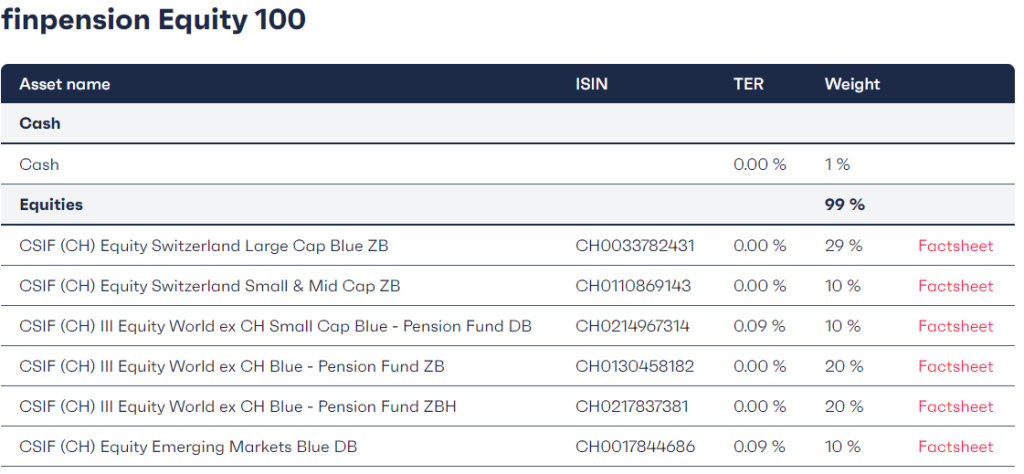
This strategy has a good mix of Swiss Stocks and Global Stocks. And the strategy also has a good diversification between small and large caps. I would use fewer funds if I did it myself, but this strategy should be a good fit for most people.
Custom strategies
Your custom strategy can be created using the application.
It is straightforward, and you have very few limits on your actions. You can invest 99% in a World index fund (minus CH), and you will have an extremely simple and well-diversified portfolio. And it will be an extremely cheap portfolio!
There is no foreign exposure limit with Finpension 3a. So, you can create a portfolio with 99% in USD stocks (1% must remain in cash). Finpension 3a is the only third pillar doing this!
Finpension justifies it by saying that the exposure limit of the third pillar regulations should only be applied to the total assets of Finpension 3a foundation. Therefore, if many people invest more in CHF than foreign currency, other investors can invest more in USD.
Having no foreign exposure limit is a great feature. This means that you can invest heavily in foreign countries without hedging. And it is essential because hedging in the long term will reduce your returns.
One of your limits is that you cannot invest too much in a single stock. You will have limits on Swiss Stock Market Indexes heavily weighted in three giant companies. This limitation comes directly from the regulations of the third pillar to avoid taking too much risk.
Crypto in the third pillar
Interestingly, Finpension 3a is the first third pillar to allow investments in cryptocurrencies as an alternative investment, next to gold.
In December 2021, they started allowing investors to invest up to 5% of their third pillar in a crypto market fund. This fund is quite expensive (like all crypto funds) but is an index fund of cryptocurrencies.
I would not recommend investing in that fund, but many people will be happy! 5% of a portfolio is what I would consider fun money, so it is fine to have a small portion of your wealth in alternative investments. However, be careful about the extreme volatility.
Cash in portfolio
Keep in mind that you cannot be uninvested with Finpension 3a.
You cannot have an account with 100% in cash. If you do not want to invest 99% in stocks, you must invest in bonds.
Some people prefer cash because bonds can sometimes underperform cash. However, there are also many times in history when bonds outperformed cash. On average and in the long term, bonds perform significantly better than cash, even in Europe.
If you choose a custom strategy, you can use a money market fund. A money market fund is very similar to cash. So, you can invest mainly in stocks, bonds, real estate, and alternatives.
Finpension 3a uses the cash in your account (after a deposit) to buy shares of the funds on the second banking day of the week. And if you want to change strategy (free of charge!), Finpension 3a will make the change on the second banking day of each week.
Investing summary
Finpension will rebalance your portfolio weekly on the second banking day of the week. Rebalancing happens if the current allocation deviates for more than one percentage point.
It is interesting to note that you can disable rebalancing for each of your portfolios. I recommend rebalancing by default for most people, but some appreciate that it is optional.
Overall, the investing strategies of the finpension 3a accounts are great! They offer a great allocation to stocks, great diversification, and an excellent ability to customize the portfolio. And on top of that, they do not force currency hedging on you, which is another excellent thing.
If you do not want to invest 99% in stocks, you will invest in bonds. This is fine for most people. However, if you prefer cash over bonds, you will not be able to keep more than 1% cash in your account. On the other hand, you could opt for a money market fund.
Finpension 3a Fees
Now that we have seen their investing strategies, we look at investing fees with finpension 3a.
Finpension uses a flat rate for its fees. This flat rate is set at 0.39%, an incredibly low fee!
What is remarkable is that this low fee of 0.39% includes the following:
- VAT
- Product costs (except for crypto fund)
So, with the Equity 100 strategy (the best strategy for the long-term), you will have total costs of 0.39% per year! This fee is incredibly low, 10% cheaper than the cheapest alternative! If you use the crypto fund, you will bear the product costs yourself.
And it is! Finpension does not charge a margin on foreign currency exchanges. However, the bank they use has a spread of 0.05% on currency conversion. Many of their funds are in CHF.
However, we must remember that most of the funds used by Finpension have small loads and redemption fees. They seem to have 0.02% to 0.1% fees on load and redemption. You can look at the fact sheet of each fund to see the details. However, this is not Finpension getting that money. It is Credit Suisse.
Finally, you can even save on fees! If you recommend Finpension 3a to somebody who actively uses it, you will receive a fee credit of 25 CHF. This recommendation means you will save 25 CHF for each user you invite, and there is no limit to how many users you can invite. And if you use my code (in the next section), you will also win 25 CHF in fee credit.
Overall, the fees of the Finpension 3a account are excellent! Their fees are at least as good as the cheapest third pillar in Switzerland and often better. The Finpension 3a account is the cheapest third pillar for people wanting to invest heavily in stocks!
Extra fees
There are a few extra fees if you withdraw early from the third pillar.
If you make an early withdrawal for a house, you must pay 250 CHF. And if you pledge your third pillar for a real estate property, Finpension charges 200 CHF.
If you transfer your Finpension 3a assets less than one year after creating your account, you must pay 150 CHF.
Finally, if you withdraw your assets while abroad, you will have to pay 750 CHF if that happens during your first year at Finpension and 250 CHF after that.
Since these fees are exceptional and unrelated to investments, they are less significant. However, you should still consider them if you fall into one of these categories.
Open a Finpension 3a account
If you use my code FEYKV5, during the process, you will get 25 CHF in fee credit (if you transfer or deposit CHF 1’000 within the first 12 months).
Opening a Finpension 3a account is easy and can be done in a few minutes. Open your phone, download the finpension app on your favorite app store, and follow the process.
They will ask for your phone number and account password. Then, they will compute your investment horizon based on your age.
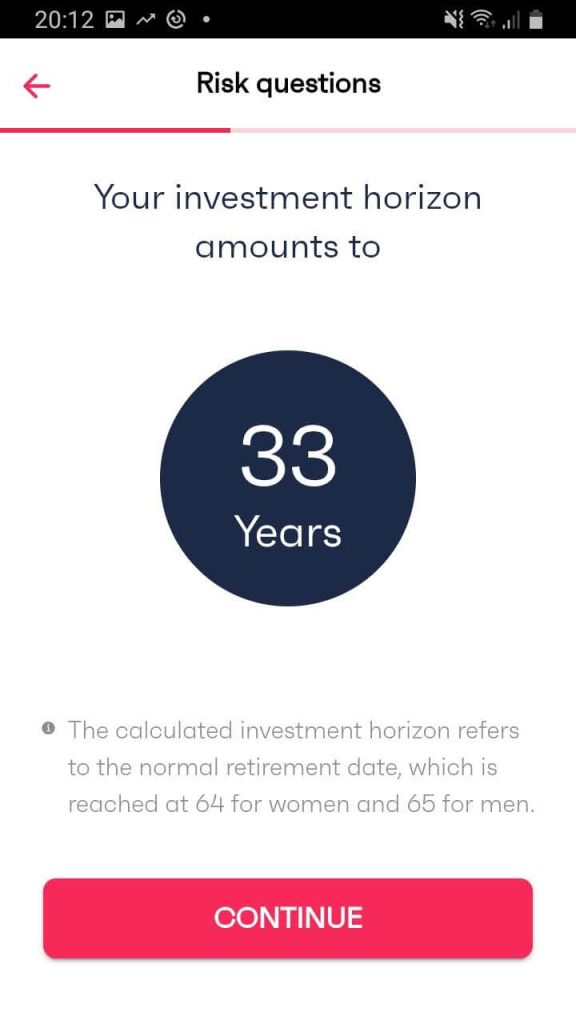
After that, you must answer the common questions about risk tolerance. And they will use that to choose an investment strategy for you. But if you do not like the suggested strategy, you can choose your own. And do not worry, you can change it later too.
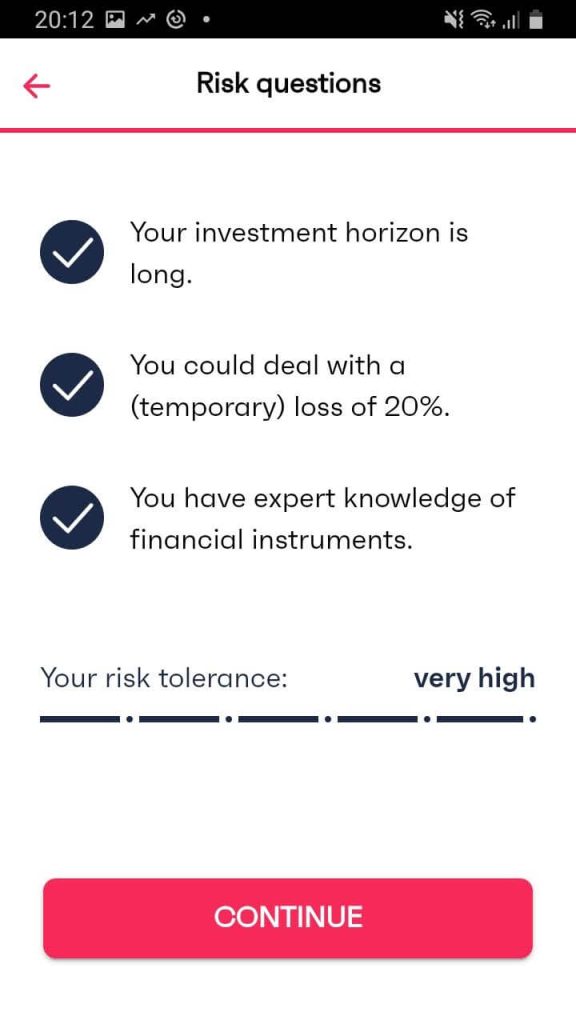
After you have chosen the strategy, you will have to fill in your personal information, and that is it! Your account is ready to welcome a deposit already. It is very smooth.
The great thing is that you can create up to five portfolios per person. It means that you can make staggered withdrawals to optimize your taxes. For more information on this optimization, read my article on the third pillar.
Once your account is created, you can verify your identity. For this, they validate that you are opening the account with your identity documents. It is not a huge difference since they would do that once you withdraw the money. But this is still better to do it now rather than later.
Security
If you want this money to last for a long time, it is essential to consider the security of each institution.
We start with the technical security of the Finpension 3a application. All the communications between the application and the servers are encrypted. You will connect with a phone number and a password.
You can choose to activate the second factor of authentication for your account. A second authentication factor will bind your account to your phone number with SMS authentication. This second factor adds a good layer of security to your account.
You can also use a proper authenticator second factor, by using an app to generate a code, which is much better than an SMS. It is essential to mention that because most Swiss services do not offer this function.
You will be able to identify your account with ID-now. This slightly improves the security of your account. I would recommend doing it now. In any case, you will need to do it when you withdraw the money.
Your cash will be held in the custodian bank of the finpension 3a foundation. The current custodian bank is Credit Suisse. This cash is protected by Swiss law up to 100’000 CHF. Since strategies at Finpension 3a have very little cash, this should not be an issue.
Your securities are invested in Credit Suisse’s institutional funds (or another if you choose so), and Credit Suisse manages more than 100 billion CHF in pension assets. Having a large fund manager, not a small unknown bank, is an excellent point.
All the funds are set on the foundation’s balance sheet. And this foundation only has client assets on its balance sheet. So, even if finpension (the asset managers) goes bankrupt, the funds are safe in the foundation. And the foundation will have to find a new manager.
Overall, I think that the security of Finpension 3a is good. The fact that the foundation is separated from the asset management company is excellent for safety.
Sustainability
Sustainable investing is something more and more investors are after. Finpension 3a lets you invest sustainably with an option. Is investing with Finpension 3a sustainable?
When you choose the sustainable option, Finpension 3a will invest in different index funds. Instead of investing in standard index funds, Finpension 3a will invest in ESG funds.
ESG stands for Environmental Social Governance. And it is the name of the three factors used to select companies in a fund. They will only invest in companies that do relatively well in these three factors. They will avoid companies that invest in fossil fuels or exploit children, for instance, and favor companies that work for renewable energies.
In theory, this sounds great. But in practice, there are some issues:
- These funds are not very selective, most companies are present in them.
- There is still some exposure to fossil fuel companies, among others.
- The criteria are not transparent.
So, simply investing in ESG funds is more sustainable than investing in standard funds. However, investing in ESG funds is not very sustainable. This is a very basic level of sustainability, the easy way in.
So, sustainable investing with Finpension 3a is not very sustainable, but it is better than nothing.
Alternatives
There are many third-pillar providers in Switzerland. However, most of them are not nearly as good as Finpension 3a.
The one that is worth mentioning is VIAC. So, we compare both in detail.
Finpension 3a vs VIAC
I have recommended VIAC as the best third pillar account in Switzerland in the past. So, we see how Finpension 3a compares to VIAC. Is it the new best third pillar account in Switzerland?
We must start with the fees. Finpension 3a is cheaper (0.39%) than VIAC (0.45%). While this difference does not sound like much, it is significant. Finpension 3a is more than 10% cheaper than VIAC.
In addition, Finpension has a very low spread (0.05%) for currency conversion, while VIAC has a large one (0.75%). VIAC is indeed using netting to reduce that fee. In practice, it costs less than 0.25% with netting. Also, a lot of funds are in CHF, which makes it cheaper. It is a one-time cost, but it is still cheaper at Finpension 3a.
Both services let you invest 99% in stocks.
You also have more freedom when creating a custom strategy with finpension 3a than with VIAC. For instance, you can create a portfolio with a 99% foreign currency exposure with Finpension 3a, while VIAC limits you to 60%! This feature is great for investors with particular needs!
While Finpension is better than VIAC for aggressive investors, VIAC has an advantage for conservative investors. Indeed, with VIAC, you can keep cash instead of bonds. And you do not pay fees on the uninvested part of your portfolio. So, if you only want to invest 20%, you can keep 80% in cash, and your fees will be lower.
Both VIAC and Finpension have a mobile application and a web application. So, they are both very practical.
Both services are quite transparent and look very honest. They both have a good level of security and safety for your assets. Finally, they both have an excellent reputation as well.
Given the higher allocation to stocks and the lower fees, Finpension 3a is a better third pillar than VIAC. Finpension 3a is the new best third pillar in Switzerland! However, VIAC is only slightly worse and is still a great option.
For conservative investors that do not want bonds, VIAC is slightly better since it lets you invest in cash.
If you want more details, I have an entire article about VIAC vs Finpension 3a.
Finpension 3a vs Frankly 3a
Frankly 3a is a popular third pillar from ZKB.
Again, we start with the fees. Finpension 3a is cheaper (0.39%) than Frankly 3a (0.45%). Finpension 3a is more than 10% cheaper than Frankly 3a.
Frankly 3a only lets you invest 95% in stocks, compared to the 99% of Finpension 3a. In the long term, this will make a significant difference.
Both services are mobile-only. The main difference is that a large bank (the Zurcher Kantonal Bank) is behind Frankly, while Finpension 3a is independent.
Frankly 3a forces you to have at least 70% of your portfolio in CHF, with currency hedging. This will diminish the returns in the long term.
Overall, Finpension 3a is significantly better than Frankly 3a. The fees are lower, and the allocation to stocks is higher. And Finpension 3a does not force you into a lot of hedging.
If you want more information, I have a review of Frankly 3a.
Finpension 3a FAQ
What is the maximum allocation to stocks with Finpension 3a?
You can invest up to 99% in stocks!
Can you invest in cash with Finpension 3a?
No, but you have access to money market funds, which are very similar.
Is Finpension 3a regulated?
Yes, Finpension 3a is regulated as a third pillar foundation, in Switzerland.
How many Finpension 3a portfolios can you have?
You can have up to 5 portfolios with Finpension 3a.
What is Finpension 3a's custodian bank?
Their custodian bank is Credit Suisse.
What is Finpension 3a great for?
Finpension 3a is great for long-term investors that want to invest their third pillar. You can invest either aggressively or conservatively, but this service is better if you keep your funds invested for a while.
What is Finpension 3a not great for?
Finpension 3a is not great if you do not want to invest your third pillar. If you prefer a cash third pillar, there are better options. Also, if you do not plan to keep your third pillar for long, Finpension 3a may not be the best option.
Finpension 3a Summary

Finpension 3a is the best third pillar available in Switzerland. They offer very high allocation to stocks, awesome customization and all this at a very low price!
Product Brand: Finpension
5
Finpension 3a Pros
Let's summarize the main advantages of Finpension 3a:
- Extremely low fees, only 0.39%!
- You can invest up to 99% in stocks.
- No currency hedging is forced on the investors.
- Straightforward registration process.
- You can create a custom investing strategy with a lot of freedom.
- No foreign equity limit
- No foreign currency limit
- Excellent transparency on all the funds and fees on their website.
- You can create up to five portfolios.
- Mobile and web applications.
- You can choose between UBS, Credit Suisse and Swisscanto funds.
- Good second-factor authentication.
Finpension 3a Cons
Let's summarize the main disadvantages of Finpension 3a:
- Finpension is a young product
- The identity is not verified during account creation
Conclusion
Finpension 3a is the best third pillar in Switzerland.
Use the FEYKV5 code to get a fee credit of 25 CHF*!
*(if you deposit 1000 CHF in the first 12 months)
- Invest 99% in stocks
I was expecting a good third pillar account by finpension, and I am not disappointed. The finpension 3a offer is a great third pillar account. It is the best third pillar in Switzerland (for people investing fully in stocks).
The fees are very low, with a minimum of 0.39%% with the proposed strategies. The overall pricing system is also very advantageous.
On top of that, you can invest up to 99% in stocks. And with a custom strategy, you can have an extremely well-diversified portfolio with only one or two funds.
All this makes Finpension 3a better than VIAC! I have moved all my accounts to Finpension 3a now. I have four portfolios with them and will open the fifth in 2023.
If you do not want to fully invest in stocks and do not want to invest in bonds, VIAC can be better. Indeed, you would only pay the fees on the investment part and not the cash part.
However, for aggressive investors, Finpension 3a is currently better than VIAC.
If you open a Finpension 3a account, please use my code FEYKV5. This code will give you a fee credit of 25 CHF (if you deposit 1000 CHF in the first 12 months) and will help my blog as well.
If you liked this review and this company, you would like my review of finpension vested benefits offer.
What do you think of this new Finpension 3a account?
Download this e-book and optimize your finances and save money by using the best financial services available in Switzerland!
Download The FREE e-bookRecommended reading
- More articles about Best retirement accounts
- More articles about Retirement
- Yuh 3a Review 2024 – Pros & Cons
- Freya 3a Review (Discontinued) 2024 – Pros & Cons
- Finpension Vested Benefits Review 2024 – Pros & Cons
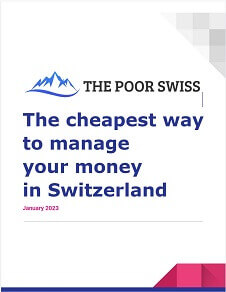
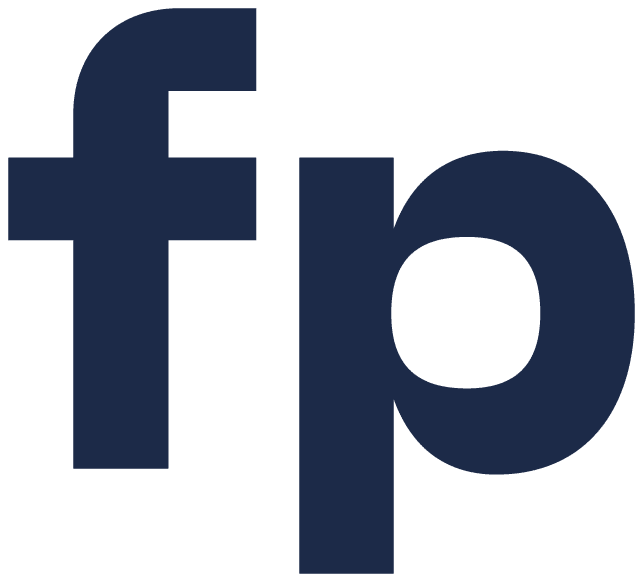
Hi, hope you are doing well.
I’m starting out my journey with this product and, having very basic understanding of investing, I was wondering if it would not perhaps be best to have different strategies for each portfolios instead of using 5x the Equity 100 one? What would you recommend?
Thanks a lot.
Hi Thomas
There is little advantage to using multiple strategies unless you want to test them. I would rather recommed selecting the strategy that suits you best and stick to it on your five portfolios.
Hi Baptiste,
What is the interest rate when pledging finpension 3rd pillar to buy a house? I understand VIAC allows you to get a credit by giving your pillar as guarantee with very interesting rates. What about finpension?
Hi Donato
If you pledge your 3a, the interest rate does not depend on Finpension but on your bank. In theory, you can pledge your Finpension 3a at any bank. In practice, many banks will prefer if you pledge their own 3a.
VIAC offers mortgage through their partner bank, HBL, indeed. But Finpension does not do that.
Hello Baptiste,
Why not go directly with Credit Suisse instead of Finpension?
I am not sure I get this question.
Finpension uses CS institutional funds, we have no direct access to that.
And Credit Suisse does not offer any good 3a to my knowledge.
Hello,
thanks for the great articles. Would you recommend Finpension even for someone who has little to no knowledge in investing? Can it still be profitable even if I go for generic strategies instead of custom strategies?
Thanks,
Andreea
Hi Andreea
Yes. You don’t need any custom strategies to get good returns in my opinion.
As long as you have a long term horizon, Finpension is great.
Hi Baptiste,
I have a portfolio with the fund CSIF (CH) III Equity US ESG Blue
Pension Fund ZB which has one of the best if not the best returns in recent years. 99% USD unhedged, so it’s also very cheap.
I want to open a new 5th portfolio and I’m hesitating between that same fund or eventually a new fund in 99% JPY. Do you think there is any advantage in having a fund in JPY? This fund have been performing amazingly in the recent years CSIF (CH) I Equity Japan Blue – Pension
Fund ZB
Also, thank your for your recommendation on IB. I have invested in Nvidia, arm and Super micro computer and I have now +35000.- since November :)
Thank you
Hi Anastasia
If would say if you are happy with your fund, keep with it. Just be aware that you are limiting yourself to a single country. As long as you aware of the limited diversification, this may work well for you.
I would not do 100% JPY since Japan is only a small part of the world stock market. Now, if it’s only 1/5 of your 3a, it may not be too bad, again granted you are aware of the lack of diversification.
Well don eon your returns in IB, but be careful again about too much tech :)
Hi Baptiste,
I hope you are doing great!
Are you able to tell us what is your % performance for each of your portfolios please?
Do you have a portfolio with 99% CSIF (CH) III Equity World ex CH Blue – Pension Fund Plus ZB ? And how does it compare in terms of performance and fees to your other portfolios?
Thank you for your help and all the best
Hi Anastasia
You can read about the perfomance of my strategies on another comment.
(It may be an interesting discussion on the forum if we want to compare more)
I used to have one strategy with the fund you mentioned but I since switched to another one, so I don’t have great data for that.
Thank you Baptiste
May I ask you why you decided to switch from 99% CSIF (CH) III Equity World ex CH Blue – Pension Fund Plus ZB to another one?
Also, what is the name of your best performing fund or portfolio?
I see Hedged 99% CSIF (CH) III Equity World ex CH Blue – Pension Fund Plus ZBH grows on average 19.90% per year and Unhedged 99% CSIF (CH) III Equity World ex CH Blue – Pension Fund Plus ZB 13%
Is still unhedged fund best to generate the highest return?
Only for trying. I switched from the World ex-CH to the World ex-CH Quality fund. I just wanted to test the Quality factor. That’s not something I recommend at this point. I still think that the the simple World ex-CH fund is the best option for the long term.
As for hedged and non-hedged, it may come down to personal preference. These last few years, the dollars has lost value against the francs, this may explain the stronger returns. But in the long term (15+ years), I still believe that hedging is not necessary. Of course, if hedging helps you sleep, use hedging!
Hey Baptiste
Are you using the rebalancing option in finpension? I just noticed they allow to switch it on and off and wonder if rebalancing is not actually generating more fees by buying and selling back and forth. Maybe rebalancing yearly (by sending 3d pillar top-up) would be enough?
Cheers
Maciej
Hi Maciej
Excellent question. I have never touched that option in Finpension. However, I agree that it may be inefficient in some cases. For instance, I am not rebalancing my personal portfolio myself.
But I should mention that in my Finpension portfolios, I am using custom strategies with a single fund in each strategy, so rebalancing would not do anything.
Keep in mind that if you have 5 portfolios and want to rebalance through top up annually, you will have to split your contribution in 5 every year. I don’t think it will make a huge difference, but I agree that it could be better to turn off rebalancing if you are toping up annually.
Hi Baptiste
Recently you recommended one should use the Global 100 portfolio but removing the hedged part of the World ex CH with the same but unhedged, leaving still about 40% CH exposure.
Now I see you recommend 99% World ex CH, why not 84% World ex CH and 15% Small Caps World ex CH?
What about having still 10% – 20% in CH assets for Home Bias (combination of SMI and SPI Extra)?
Does a Home Bias not make sense anymore in the 3rd pillar?
Hi
I am not sure I would recommend that to everybody, this is something I am experimenting with. It’s all down to personal opinion.
I think multiple portfolio make sense:
* Global 100 without hedging (keeping Swiss)
* A single world fund without hedging
I am not convinced about the bias towards Small cap but that could be done depending on your asset allocation.
Again, for the home bias, it depends on your full asset allocation. My total allocation to CH stocks is high enough that I don’t need Swiss stocks in my 3a. But for people with low allocation in other places, it does make total sense. There is no one-size-fits-all solution.
Now that Credit Suisse is slowly fading out of existence how is this likely gonna change? I did not find any comment by finpension on the changes made after this…
Hi, I had the same thought, wondering if it is still wise?
I think nothing will change. The funds will stay the same. They will maybe be renamed, but it wont’ change. I don’t think USB is going to merge them with its own funds. And even if that happens, it won’t change much since the UBS are also available at Finpension.
New:
iShares Bitcoin Trust isin US46438F1012 ter 0.25 %
> No second-factor authentication on the mobile application.
this disadvantage is fixed and you mention in the article, but kept in “cons”
Thanks for letting me know, I will amend that!